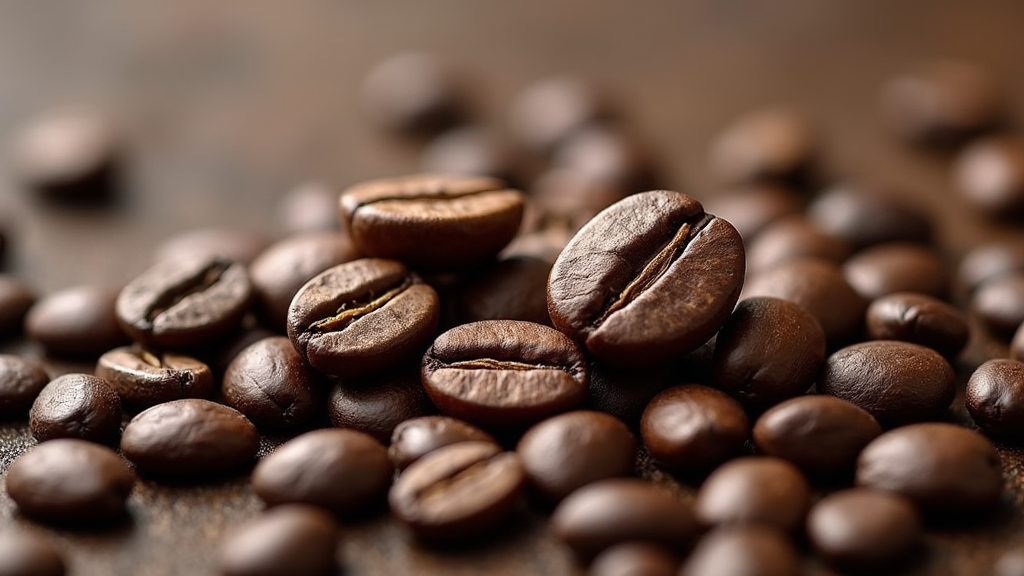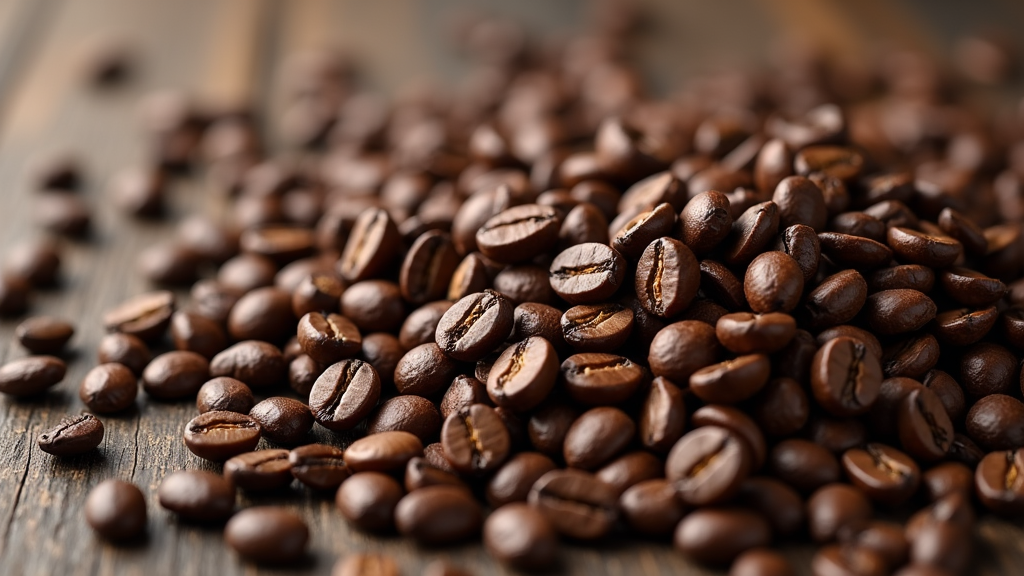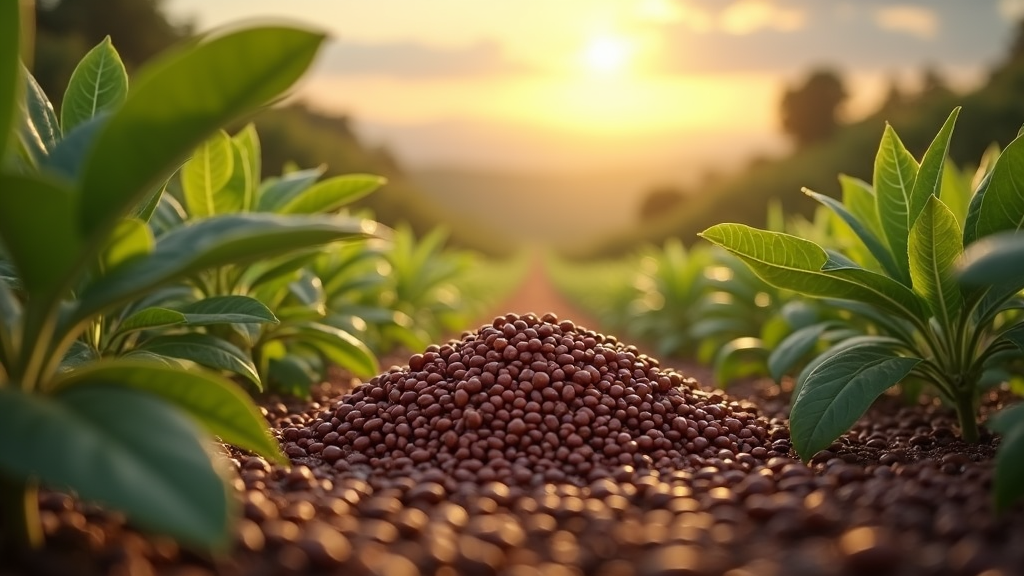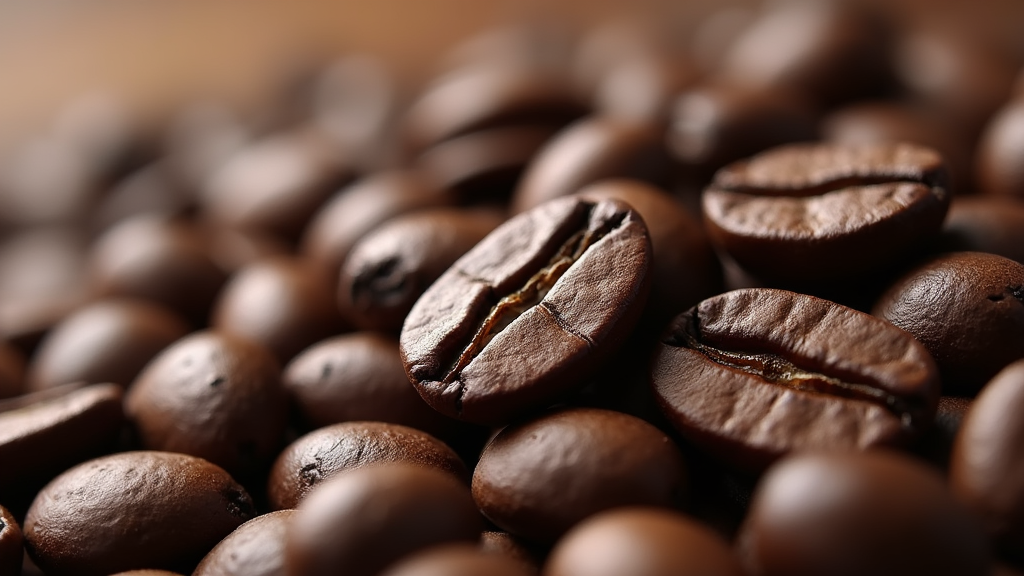Table of Contents
- Exploring: What are the Two Main Coffee Bean Types?
- Exploring: What are the Two Main Coffee Bean Types?
- Arabica Coffee Beans: Fundamental Characteristics
- Arabica Coffee Beans: Essential Flavor Components
- Optimal Growing Conditions for Arabica Coffee Beans
- Arabica Coffee Beans: Defining Bean Characteristics
- Global Production Volume of Arabica Coffee Beans
- Arabica Coffee Beans: Vulnerability and Susceptibility
- Exploring: What Are the Two Types of Coffee Beans
- Robusta Coffee Beans: Fundamental Concepts Unveiled
- Robusta Coffee Beans: Essential Components and Flavor Profile
- Robusta Coffee: Growing Conditions and Environmental Factors
- Robusta Coffee Beans: Distinct Bean Characteristics
- Global Production: Robusta’s Market Share Explained
- Robusta Coffee: Understanding the Caffeine Content
- Understanding What are the Two Types of Coffee Beans
- Flavor Profiles: Arabica vs. Robusta Bean Differences
- Caffeine Content: Arabica Compared to Robusta Beans
- Growing Conditions: Arabica and Robusta Bean Requirements
- Price Point: Arabica Beans Versus Robusta Beans
- Global Production: Arabica and Robusta Market Share
- Acidity Levels: Distinguishing Arabica From Robusta
- Regional Cultivation of the Two Coffee Bean Types
- Popular Uses for Each of the Coffee Bean Types
- Concluding Thoughts: What Are The Two Types of Coffee Beans Outline
Exploring: What are the Two Main Coffee Bean Types?

Global Coffee Bean Diversity: Arabica and Robusta
While approximately 120 different coffee bean species exist, two reign supreme in the global market: Arabica and Robusta. These two varieties account for nearly 100% of the world’s coffee production. Understanding the key differences between Arabica and Robusta is crucial for anyone looking to deepen their coffee knowledge and make informed choices about the beans they select and enjoy. Arabica beans currently represent about 60% of global production, while Robusta makes up the remaining 40%.
Arabica and Robusta Coffee Bean Origins
Arabica’s journey likely began in the highlands of Ethiopia, where it was first cultivated and appreciated for its delicate flavors. Robusta, on the other hand, has its origins in sub-Saharan Africa. Today, both Arabica and Robusta beans are cultivated extensively across numerous equatorial countries, forming a region known as the “bean belt.” Recent trends in the coffee industry include a growing interest in specialty Robusta varieties and the development of innovative hybrid beans, further diversifying the coffee landscape.
What You’ll Discover: Arabica vs. Robusta Outline
This guide will delve into the defining characteristics of both Arabica and Robusta coffee beans. You will learn about their distinct flavor profiles, the specific growing conditions they require, and the differences in their caffeine content. We’ll also explore the key regional cultivation areas for each bean type, highlighting the major producer countries that shape the global coffee market.
Exploring: What are the Two Main Coffee Bean Types?
Arabica Coffee Beans: Fundamental Characteristics
**Expert Insight:** Arabica beans, favored for their smooth, nuanced flavor and lower caffeine, dominate the coffee market, accounting for roughly 60% of global production. However, their susceptibility to diseases necessitates careful cultivation, making your choice of ethically sourced Arabica beans all the more impactful.
Arabica (Coffea Arabica) is the world’s most beloved coffee bean, celebrated for its smooth, aromatic flavor and intricate nuances. It distinguishes itself with lower caffeine and acidity levels compared to Robusta, making it a favorite among coffee connoisseurs.
Arabica Coffee Beans: Essential Flavor Components
Arabica beans boast a sweeter, more aromatic flavor profile, often revealing notes of fruit, florals, chocolate, and nuts. The primary aspects of its flavor are smoothness, aroma, and complexity, while acidity and body contribute as secondary aspects. Important Arabica variations include Bourbon, Catimor, Caturra, and the highly prized Gesha (Geisha).
Optimal Growing Conditions for Arabica Coffee Beans
Arabica thrives in cool, high-altitude climates, typically between 600 and 2000 meters above sea level. These beans require more water and shade to flourish, contributing to their delicate flavor development.
Arabica Coffee Beans: Defining Bean Characteristics
Visually, Arabica beans are larger and oval-shaped, easily identified by the distinctive crease running down the middle.
Global Production Volume of Arabica Coffee Beans
Arabica accounts for approximately 60% of the world’s coffee production, highlighting its dominant position in the global market.
Arabica Coffee Beans: Vulnerability and Susceptibility
A key challenge in Arabica cultivation is its susceptibility to diseases such as leaf rust and coffee berry disease, requiring careful management and cultivation practices.
Exploring: What Are the Two Types of Coffee Beans

Robusta Coffee Beans: Fundamental Concepts Unveiled
Robusta (Coffea Canephora) stands as the second most popular coffee bean worldwide. It is celebrated for its bold and robust flavor profile, characterized by earthy and bitter nuances. Robusta boasts a higher caffeine content and a lower acidity level when compared to its Arabica counterpart.
Robusta Coffee Beans: Essential Components and Flavor Profile
The flavor profile of Robusta is notably strong and full-bodied, presenting earthy, rubbery, and bitter undertones. Its primary aspects include its strength, bitterness, and substantial body. Secondary aspects involve its acidity level, which is lower than that of Arabica. It’s important to note that Robusta is often considered of lower quality compared to Arabica and is frequently incorporated into coffee blends to enhance caffeine content and crema in espresso.
Robusta Coffee: Growing Conditions and Environmental Factors
Robusta thrives in lower altitude environments, typically ranging from sea level to 600 meters. Its resilience is a key advantage, as it is hardier and more disease-resistant than Arabica, making it easier and more cost-effective to cultivate.
Robusta Coffee Beans: Distinct Bean Characteristics
Robusta beans are typically smaller and rounder in shape compared to the more elongated Arabica beans. This difference in physical appearance is one way to visually distinguish between the two types of coffee beans.
Global Production: Robusta’s Market Share Explained
Robusta accounts for approximately 40% of the global coffee production. Its prevalence is due to its hardiness and higher yields, making it a commercially viable option for many coffee farmers.
Robusta Coffee: Understanding the Caffeine Content
Robusta contains almost double the caffeine content of Arabica, ranging from 2.2% to 2.7% compared to Arabica’s 1.2% to 1.5%. This higher caffeine level contributes to its strong, stimulating effect.
Understanding What are the Two Types of Coffee Beans
Flavor Profiles: Arabica vs. Robusta Bean Differences
Arabica beans are celebrated for their sweeter, more aromatic flavor. They often exhibit notes of chocolate, nuts, caramel, and fruits. Robusta beans, on the other hand, have a stronger, more bitter taste with a rubbery or burnt undertone. The higher concentration of chlorogenic acids in Robusta contributes to this distinct bitterness.
Caffeine Content: Arabica Compared to Robusta Beans
Robusta beans contain significantly more caffeine than Arabica beans. On average, Robusta has almost double the caffeine content of Arabica. This makes Robusta a popular choice for those seeking an extra energy boost.
Growing Conditions: Arabica and Robusta Bean Requirements
Arabica beans thrive at higher altitudes, typically between 600 and 2000 meters above sea level. They require a cool, moist environment. Robusta beans are more resilient and can grow at lower altitudes, from sea level up to 600 meters. They prefer warmer climates and are more resistant to diseases.
Price Point: Arabica Beans Versus Robusta Beans
Arabica beans are generally more expensive than Robusta beans. This is due to their more delicate nature, the specific growing conditions required, and their perceived higher quality in terms of flavor. The increased demand for Arabica also contributes to its higher price.
Global Production: Arabica and Robusta Market Share
Arabica accounts for approximately 60% of global coffee production, while Robusta makes up the remaining 40%. The dominance of Arabica reflects its widespread popularity and preference among coffee consumers worldwide.
Acidity Levels: Distinguishing Arabica From Robusta
Arabica beans typically have higher acidity compared to Robusta. This acidity contributes to the bright and complex flavors that Arabica is known for. Robusta, with its lower acidity, tends to have a more muted and less nuanced taste profile.
Regional Cultivation of the Two Coffee Bean Types

Arabica Bean Cultivation Regions Worldwide
Arabica beans are grown in over 50 countries, primarily in Latin and Central America, Africa, and Asia. Major producers include Brazil, Colombia, Ethiopia, and several Central American nations. These regions provide the ideal climate and altitude for Arabica cultivation.
Robusta Bean Cultivation Regions Worldwide
Robusta beans are mainly cultivated in Vietnam, Indonesia, India, and other warm equatorial regions. Vietnam is the largest producer of Robusta, followed by Indonesia and India. The robust nature of Robusta allows it to thrive in these diverse climates.
Popular Uses for Each of the Coffee Bean Types
Arabica Beans: Ideal Brewing and Specialty Coffee Uses
Arabica beans are preferred for brewed coffee and specialty coffee drinks due to their superior taste and aromatic qualities. They are often used in pour-over, drip, and French press methods to highlight their complex flavors.
Robusta Beans: Espresso Blends and Instant Coffee
Robusta beans are commonly used in espresso blends to add body, crema, and a caffeine kick. They are also a popular choice for instant coffee production due to their strong flavor and higher caffeine content, making them suitable for quick and convenient coffee solutions.
Concluding Thoughts: What Are The Two Types of Coffee Beans Outline

Recap: Arabica and Robusta Coffee Bean Differences
In summary, the world of coffee is largely defined by two dominant types of beans: Arabica and Robusta. Arabica, celebrated for its smoother, more nuanced flavor profile, offers a delightful aromatic experience. Robusta, on the other hand, provides a bolder, more robust taste, often with a higher caffeine content and a characteristic bitterness.
These differences are not just academic; they profoundly impact the final cup of coffee you enjoy. Understanding these key distinctions allows you to appreciate the nuances of different blends and single-origin coffees, ultimately enhancing your overall coffee drinking experience.
Emerging Trends in Arabica and Robusta Coffee Beans
The coffee industry is constantly evolving, and several exciting trends are emerging regarding both Arabica and Robusta beans. We are seeing an increased focus on specialty Robusta beans, with producers working to cultivate and process Robusta in ways that minimize bitterness and maximize flavor complexity. This is leading to a re-evaluation of Robusta’s potential and its use in espresso blends.
Furthermore, the development of new hybrid varieties, often crossing Arabica and Robusta, is opening up new possibilities in terms of disease resistance, yield, and flavor profiles. Consumers are also becoming increasingly aware of coffee bean origins and characteristics, driving demand for more transparent and sustainable sourcing practices. This growing awareness is pushing producers to focus on quality and traceability, ensuring a richer and more rewarding coffee experience for everyone.

